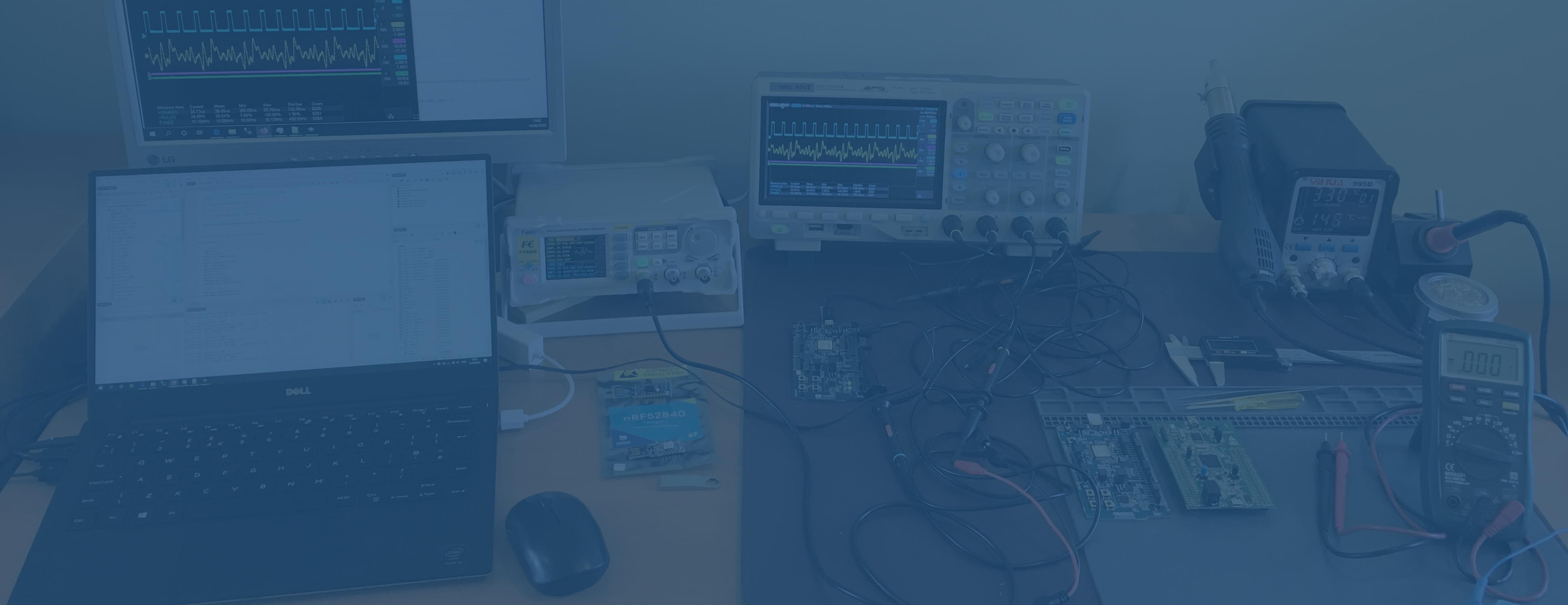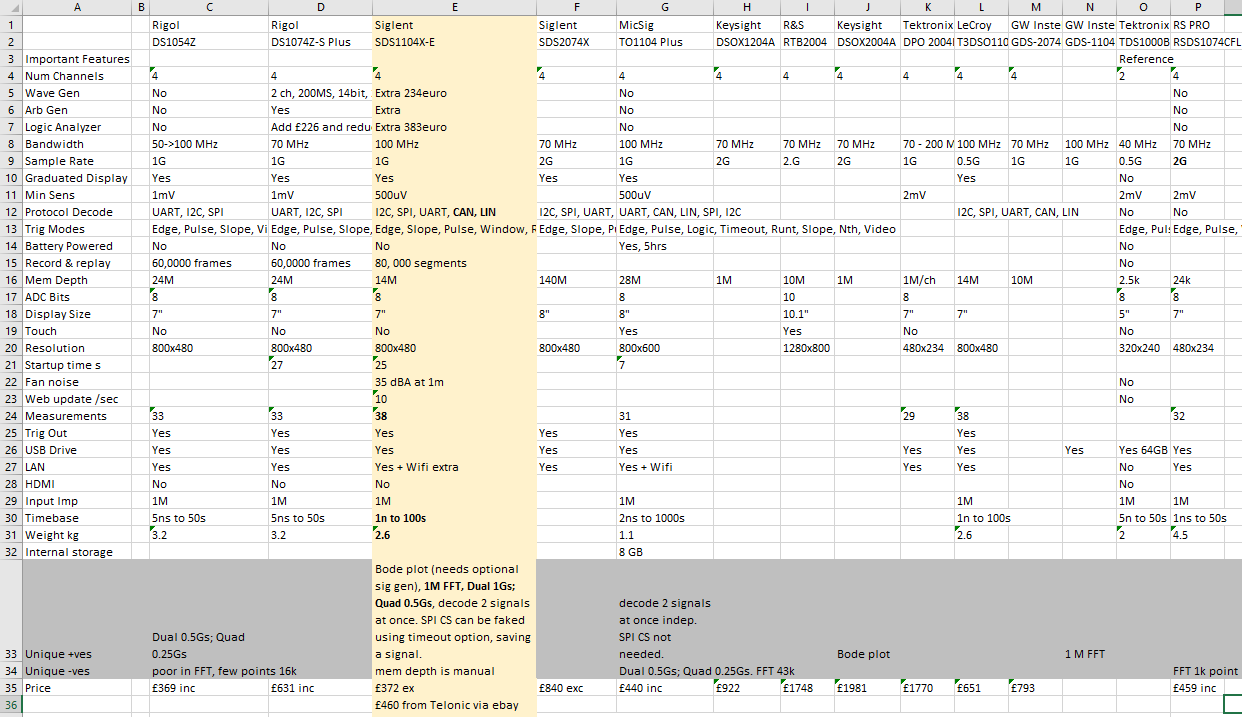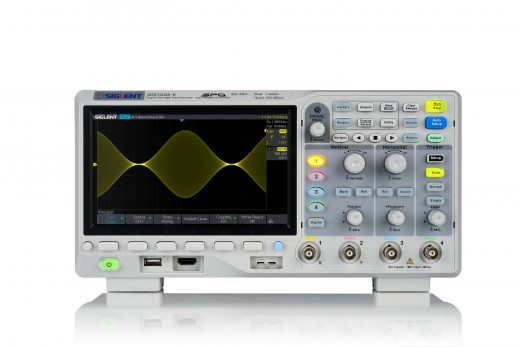
Choosing A 'Scope For Embedded Use
As an embedded engineer, I need to be able to see signals on the board under test in a reliable and trustworthy way. It is important to see a few signals on the same display to be able to measure time differences between them, so a multi channel oscilloscope is essential. Whilst it sounds like it would be a good idea to see as many signals as possible at once, this is only possible on a logic analyser, which reduces the analogue nature of the signals to a digital one.
Logic analysers are great for multiple signals, once you are sure that the digital waveforms have the right analogue characteristics - high level, low level, rise time, fall times, ringing, spikes, noise, gitches on the edges. The logic analyser will hide all that from you and always show perfectly squared off pulses. If a logic analyser probe is connected to an input pin that isn't being driven, or an output in a high impedance state, it will pick up crosstalk from other signals on the board and you will see some unexpected pulses which the logic analyser makes look worse because it has squared them off.
So you need a 'scope to start with, to show you all these properties of the signal, before you follow up with a logic analyser. But modern 'scopes can analyse logic signals and protocols to give you the best of both worlds. When choosing a 'scope, one with capability to decode and trigger on the common protocols I2C, SPI and UART signals is a definite advantage, and some can do that for CAN bus and LIN too.
The next step is a Mixed Signal Oscilloscope, MSO, but these tend to be quite a bit more expensive. I agree with Dave Jones that MSOs are not worth it for these reasons:
- PC based LAs are cheaper than the add-on cost MSO-DSO.
- PC based LAs use sample compression which means sample rate doesn't need to be high. MSO at high sample rate will use up a lot of its storage for slowly changing signal.
- You don't necessarily need the 16 channels due to common use of serial buses in place of parallel.
- PC based LAs use the PC's disk for unlimited storage but MSOs have limited storage.
- PC based LAs use PC's large high resolution screen, MSO screen is cramped for so many signals.
- PC based LAs use keyboard and mouse for data entry (eg signal naming) and selection but MSOs have pokey user interfaces, unless they are touch screen.
- PC based LAs have quick screenshot and data export facilities.
- MSO don't do state analysis using an external clock for sampling.
- You can still correlate analogue and digital signals by using Trig Out from DSO into a channel of LA.
- Budget MSOs often make you give up one or more analogue channels when using the LA.
- 16 channels LA in MSO might not be enough when you need to work on address decoding logic, would need something like Intronix 34 channel.
If you are not going for an MSO, then you at least need to go for a 4 channel 'scope over a 2 channel. Unfortunately, most of the 4 channel budget 'scopes only have one vertical gain knob, but that is not too bad a compromise for the price.
So how does an engineer choose anything? With a spreadsheet of course! Decide on your important features and tabulate them against your candidates. 'Scopes are famous for having so many parameters to compare, and you often have to read or watch reviews to see the truth behind some of these specifications, so you have to decide which few are important to you. I have included the Tek TDS1000B which I used for many years at work, for comparison. It is amazing how much better the newer 'scope are.

Whilst I agree with Dave Jones that the Rigol DS1054Z is by far the best value for money DSO on the market in 2019, ultimately it was not my pick. Although £80 more expensive, the Siglent SDS1104X-E is better for these reasons
- Serial decode adds CAN and LIN bus.
- 38 measurements (Rigol is 33)
- FFT uses 1M pts (Rigol is 16k pts) (why you need many points for good FFT)
- Wider timebase options - 1ns to 100s (Rigol is 5ns to 50s)
- When using 2 channels, sample rate is 1G/s (Rigol is 0.5G/s). When using 4 channels, sample rate is 0.5G/s (Rigol is 0.25G/s).
- Lighter weight - 2.6kg (Rigol is 3.2kg)
The Siglent is slightly worse on the memory depth (14M and manual select) than the Rigol (24M and auto select) but still much better than others.
The MicSig TO1104 Plus is surprising good in this comparison and has some unique advantages of battery power, touch screen, WiFi and internal storage. I have seen it in action and there is some fan noise. Ultimately I didn't want a battery degrading due to being on charge permanently and had reservations about the usability of the touch interface.
Late on in the process I found the RS PRO RSDS1074CFL which has the advantage of 4 vertical gain knobs but is too much worse in other aspects to recommend it. Memory depth of 24k points, screen resolution of 480x234 and FFT using 1k points are all poor in comparison to the others.
At one point I was tempted to go for the Rigol DS1074Z-S Plus due to the built in 2 channel waveform generator, 200MS, 14 bit with arb. But then I saw that this adds £262 over the DS1054Z so I would be better with a separate sig gen like the Rigol DG800 for £181 or 2 channel Siglent SDG100X for £232. Especially since I don't actually have a use for it right now.
A couple of seemingly minor aesthic considerations. The Rigols use different shades of blue for channels 2 and 4, one being lighter than the other, while the Siglent uses yellow, pink, blue, green for its colour coding which is more distinct. The Rigol uses buttons down both sides of the screen and has acute angles on the buttons, while the Siglent has the buttons along the bottom of the screen only and are more rounded.
So the Siglent SDS1104X-E is the winner for my requirements.

Photo by Siglent.